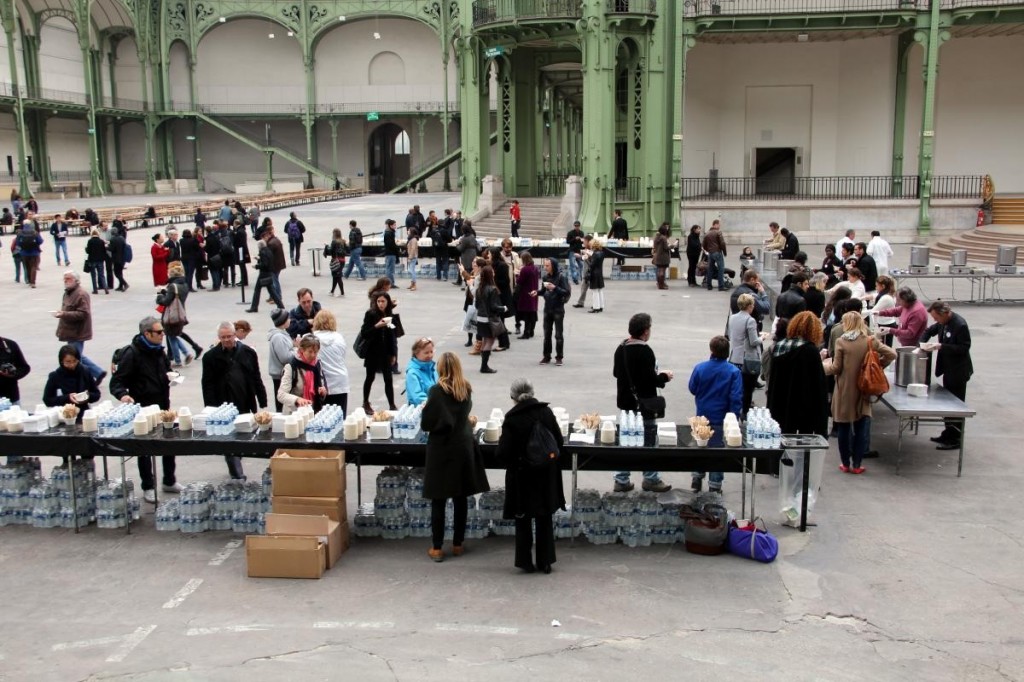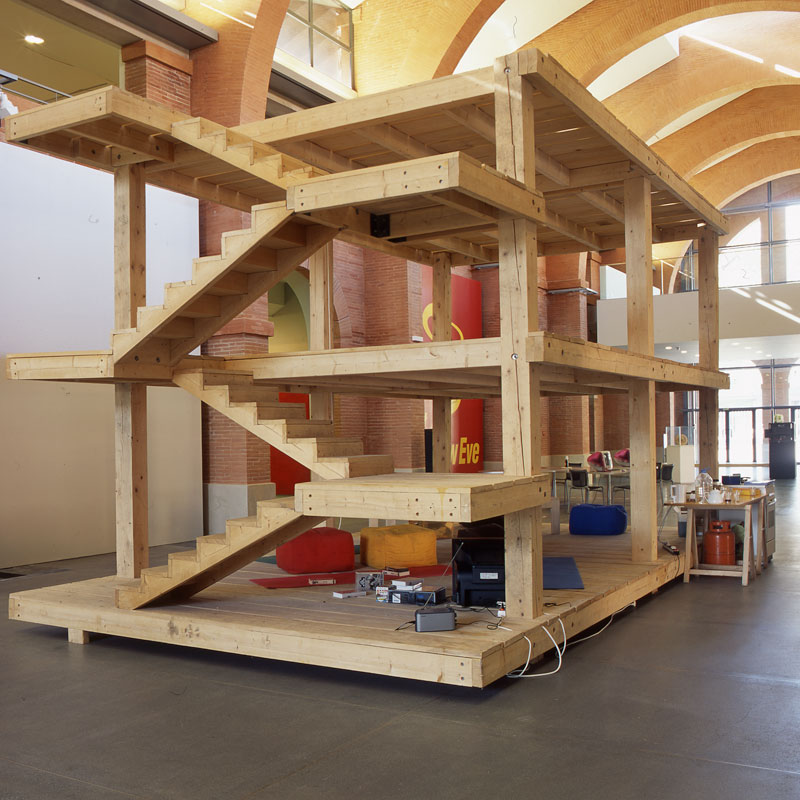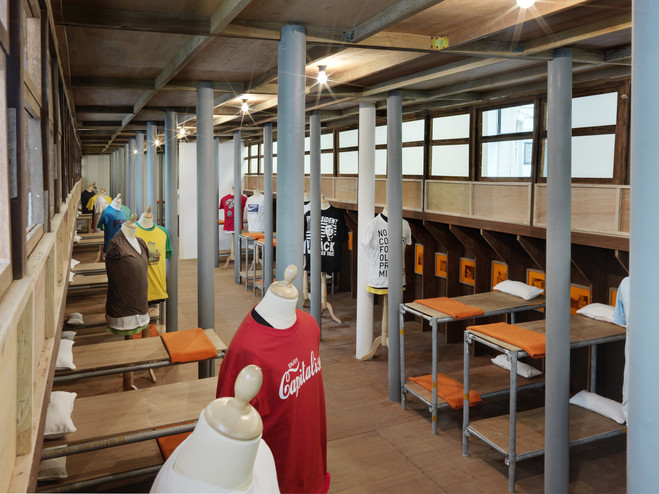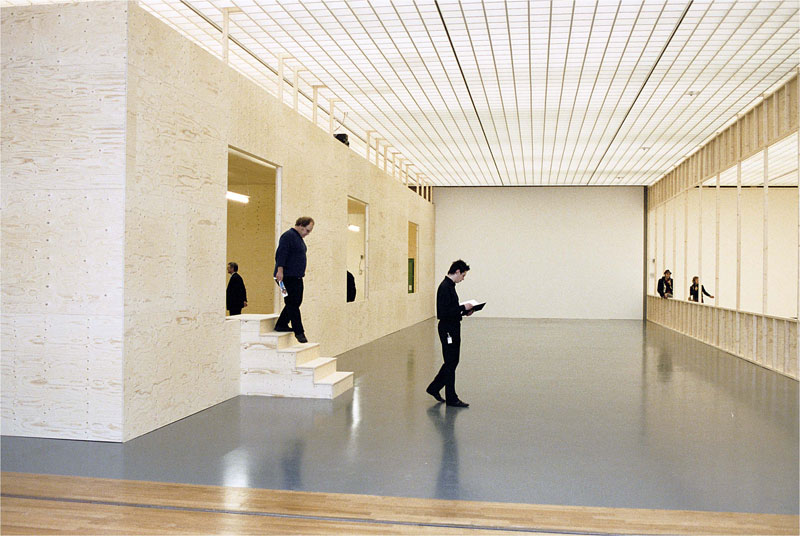RIRKRIT TIRAVANIJA

Né à Buenos Aires en 1961. Fait ses études au à l’Ontario College of Art, à la Banff Center School of Fine Arts, à l’Art Institute of Chicago et à l’Independent Study Program du Whitney Museum of American Art. Vit et travaille entre Berlin, New York et Bangkok.
Born in Buenos Aires in 1961. Studied at the Ontario College of Art, the Banff Center School of Fine Arts, the school of the Art Institute of Chicago and the Independent Study Program at the Whitney Museum of American Art. Currently lives and works between Berlin, New York et Bangkok.
Rirkrit Tiravanija incarne parfaitement la globalisation apparue dans les années 1990. L’artiste a été fortement influencé par le nomadisme et le besoin de reformer des micro-communautés face à un monde en croissance exponentielle.
Dès la première apparition de son travail à New York en 1989, la critique fut déstabilisée. Tiravanija insufflait du quotidien, des actions simples et a priori sans valeur dans l’espace des galeries. Déchets ou restes de repas trouvaient grâce à ses yeux au sortir d’une décennie artistique marquée par un retour aux supports traditionnels et un certain désintérêt pour le dialogue entre l’art et la vie.
En 1990, Tiravanija réalise Sans titre (Pad Thaï) et organise tous les deux ou trois jours un repas thaïlandais qu’il offre gracieusement aux visiteurs. Les jours « vacants », les ustensiles de cuisine sont exposés. On a beaucoup glosé sur cette façon d’exposer ce qui est « hors d’usage », souvent interprétée comme une mise en scène du désir déçu du spectateur de ne pas avoir participé au vernissage. Ce qui est un non-sens puisque l’artiste, lors de ses premières expositions, s’engageait à être présent régulièrement et à nourrir ses visiteurs. « L’important n’est pas ce qu’on voit, c’est ce qui se joue entre les êtres. »
Rapidement, Tiravanija se voit proclamé héritier de Daniel Spoerri et de Gordon Matta-Clark. Ce dernier constitue une référence avancée par le jeune artiste lui-même.
Dans la lignée de cette première exposition, Tiravanija ouvre un studio de répétition [Sans titre (Rehearsal Studio n°6), 1996] qui voyagera du Whitney Museum de New York au Consortium de Dijon. Lieu de convivialité implanté dans l’espace d’exposition habituellement sacralisé, cette œuvre était réellement destinée à être utilisée par des groupes musicaux. Le reste du temps, la structure demeurait inerte, comme en attente d’une activation populaire et spontanée.
En 1996, pour Untitled (tomorrow is another day), Tiravanija transforme la galerie de Gavin Brown à New York en appartement privé ouvert 24 heures sur 24. Un véritable casse-tête pour le marchand dont l’espace se voyait livré à une socialisation incongrue. « Les installations que je présente ne sont ce qu’elles sont qu’en tant qu’elles sont traversées par les gens. Bien sûr, il est toujours possible de les acquérir mais cela ne signifie absolument plus rien si l’on en a plus l’usage », précise l’artiste. Dans les institutions, l’exposition de sa pratique pose des difficultés multiples en termes de conservation de ces restes de performance (laisser les aliments moisir) et vis-à-vis des œuvres d’autres artistes (cuisiner avec une flamme dans un espace muséal, manipuler des aliments véhicules de bactéries). Ce travail devient, à travers les écrits du critique d’art Nicolas Bourriaud, le symbole de l’Esthétique relationnelle (1998).
En réponse à la désincarnation d’un monde contemporain ultra-numérisé, Tiravanija propose une alternative humaine, installe des espaces de vie dans les temples de l’art, imagine une alternative au marché à travers une réflexion poussée sur la valeur du processus. Depuis 1998, il s’investit sur un territoire thaïlandais autour de la ville de Chiang Mai. C’est là qu’il a installé une communauté d’artistes, The Land Foundation, qui compte les Français Pierre Huyghe et Philippe Parreno. Dans ce projet, entre utopie communautaire et réhabilitation écologique, art, architecture et agriculture s’entrecroisent pour former des projets hétéroclites, poursuivant la réflexion toujours vivace sur la fusion entre l’art et la vie.
Bénédicte RAMADE, Source : Encyclopædia Universalis (02/12/14)
Thai conceptual and installation artist, active also in the USA. Tiravanija, son of a Thai diplomat, studied at the Ontario College of Art, Toronto and the Banff Center School of Fine Arts, before attending the art school of the Art Institute of Chicago and the Independent Study Program at the Whitney Museum of American Art, New York. Tiravanija’s practice often involves everyday actions and commonplace materials, as well as audience interaction. His first untitled solo show, at 303 Gallery, New York in 1992, consisted of offering visitors Thai food cooked on-site. In 1995 he presented a similar untitled work at the Carnegie International exhibition at the Carnegie Museum of Art, Pittsburgh, PA. At this venue he included wall text that presented written instructions for cooking South-east Asian green curry, which was then prepared for visitors.
The participatory and performative aspects of Tiravanija’s art, combined with straightforward instructions, recall elements found in work by the Japanese Fluxus artist Yoko Ono. Tiravanija’s strategy of audience participation also echoes the approach of the German conceptual artist Joseph Beuys in the 1970s, who declared that ‘everyone is an artist’ and also defined ‘social sculpture’ as a form in which dialogue and ideas are an artist’s primary media. In 1999 Tiravanija moved into broader explorations of domestic themes and participatory art with Untitled 1999 (Tomorrow Can Shut Up and Go Away), a life-sized replica of his apartment, presented at Gavin Brown’s Enterprise, New York. Made primarily of plywood, the facsimile of Tiravanija’s home was open to the public 24 hours a day, and was often occupied by students. In Untitled 1999, as well as in the earlier makeshift-kitchen works, Tiravanija conveyed a sense of both displacement and adaptability, suggesting a parallel to the experiences of both frequent global travellers and refugees alike.
In 2004 the Guggenheim Museum in New York honoured Tiravanija with the Hugo Boss Award and presented an exhibition of his work, which had more overtly political tones. Untitled 2005 (The Air Between the Chain-Link Fence and the Broken Bicycle Wheel) was an installation that featured in this exhibition. In this work Tiravanija addressed governmental control of popular media by installing a low-tech pirate television station within the museum, using a simple metal antenna and cables as broadcasting equipment, accompanied by a small wooden structure housing a television set and chairs. On the gallery walls Tiravanija featured the text of the US Constitution’s First Amendment (advocating freedom of speech), a history of radio and television communication in America, and simple directions for constructing low-tech broadcasting equipment.
Tiravanija’s support of free speech is conveyed by his choice to broadcast the low-budget film Punishment Park (1971), a documentary on the suppression of Vietnam War protests. The titular bicycle tyre of Untitled 2005 is placed atop the wooden structure and can be seen as a reference to Marcel Duchamp’s classic ready-made sculpture, Bicycle Wheel (1913; destr.). This piece blurs the line between art and the banalities of daily life, as do his earlier works.
Reena Jana from Grove Art Online © 2009 Oxford University Press
Source : MoMA
TRAVAUX/WORKS :






12 x 6 x 3 m, 2002 © Courtesy of the artist & Gavin Brown Enterprises



1 commentaire
Les commentaires sont fermés.